Will Richardson clearly points out, in his video clip The Surprising Truth about Learning in Schools from last week’s reading material that there is an elephant in the classroom that we need to acknowledge. That elephant is the fact that schools are in desperate need of change in order to work to meet the needs of 21st century students and we need to face the issue head on. The trouble is, by pointing out the elephant, there is the potential of the stampede that comes with it. Of course, as educators, we know that by speaking up and making our voices heard on behalf of our students, much like the Lorax speaks up for the trees, we run the risk of making some waves. Though potentially going out on a limb here, I want to be frankly honest about my beliefs with the understanding that as a collective we need to work to enact change even if it ruffles some feathers. The students are counting on us to do just that and we cannot wait any longer. The time is now.
In the state of Hawaii when the Hawaii Content and Performance Standards (HCPS) III were replaced with the Common Core State Standards (CCSS), new changes were in store for us. Along with this new set of standards was to be a paradigm shift in the way we educate students. We were now going to put down the multiple choice tests and get kids thinking about real world problems and in real world ways. No more bubbling in an answer but rather constructing one of their own. It sounded pretty good. And the change was needed for obvious reasons.
But with any solution to a problem, new issues surface. Enter the Springboard curriculum (workbook) and the Smarter Balanced Assessment (SBA) test. From my perspective, we replaced one problem with another one. Teachers are expected to use a canned program as the basis for their curriculum, which takes away our voice and choice and in doing so, equally robs the students of their own. Students are still taking “the test” on which there is one whole portion that is mostly multiple choice and is still traditionally test-like in nature. Yes, the writing component is there, but if you’ve ever taken a look at it, it’s just more of the same. Susan Lucille Davis states it best when she suggests that the Common Core State Standards for writing “encourage[s] English teachers everywhere to continue to teach writing in the same old, inauthentic ways” that don’t meet the needs of students in today’s world (2012). And to top it off, it’s a one and done deal. No more are students allowed multiple opportunities to showcase their growth and learning in this standardized test, but rather it is one snapshot in time, one chance to prove that their year of learning added up to something worthwhile in the eyes of the standardized powers that be.
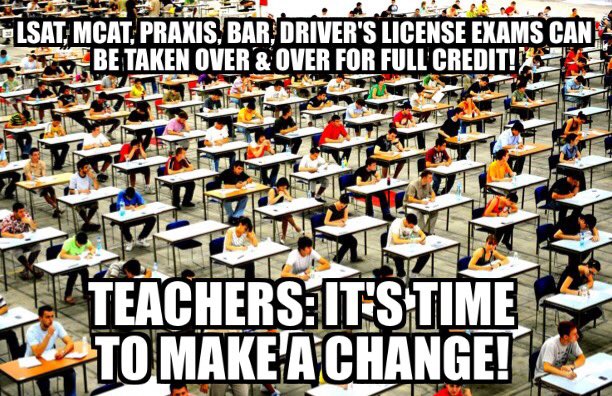
Enter the stampede. What do you do when the very fabric of your being is being stretched beyond the limits of acceptability? On one hand you know what changes need to occur. You know what you believe makes a good school. You are willing to learn in the face of new technology to bring your classroom up to speed for students who have been working the iPad and the Kindle and loading computer programs since toddlerhood and can most definitely teach the teacher a thing or two. But on the other hand, well–that hand is tied. Tied to reform. Tied to mandates. Tied to doing what you are supposed to do versus doing what we know is right for kids. In the Introduction of the Innovator’s mindset, George Couros states the importance of “…moving away from a culture of compliance to create engagement and ultimately, empower those in our schools” (2015). He goes on to state that “twenty-first-century education is not about the test; it’s about something bigger.”
When my daughter was still in high school, I would drop her off on my way to work. The parking lot at her school was coned off so that there was a clear entrance and exit. Go in to the right. Exit to the left. Simple enough. But it seemed I was one of the few (maybe only) parents going that route. It was around a giant loop through a parking lot to follow said rule, when most other parents cut through in the straight shot to drop their kids off , many before I had even banked my first “official” turn. My daughter asked me one day, “Mom, why do you follow the rule? No one else does? Just cut through and let me out.” She made a good point. But there’s this integrity thing. This I’m following the rules because that’s what we do thing. The truth is, it’s in my DNA to be a rule follower. So bucking the system is hard for me, until I look into the eyes of my students yearning for something better, and then I know it’s time to cut through the parking lot of bureaucracy and find a balance that works for us all .
In this week’s IMMOOC Event 1, it states that the world is changing and we need to change with it. One key theme surrounding the talk was with regard to the notion that change is an opportunity to do something amazing. Dave Burgess explains that we can’t create change all at once by simply announcing from the podium that “We are all going to be pirates, now here is your eye patch.” Indeed, it requires something much deeper. It is time, as Burgess states, to embody the spirit of a pirate. To sail into unknown and potentially scary new waters with no map to the treasure of success and find what he refers to as the “mightier purpose.” He goes on to elaborate that it is not just about increasing test scores, but rather “raising human potential” (Burgess, 2016). I might be a rule follower and love the safety net of my comfort zone, but the truth is it is time I too embrace my inner pirate.
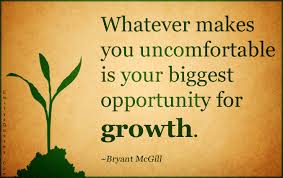
When I was in my Teacher Education program in college I stumbled upon this book, If You’re Riding a Horse and it Dies Get Off by Jim Grant and Char Forsten. It was about how, as schools, we have great intentions to make things better. We take our “dead horse” of education and do everything we know to revive it. Throw money at it, give the “rider” a competency test, and finally, out of the mouth of the student comes the most poignant thought of all. “If you’re riding a horse and it’s dead, get off and try something new,” as the shiny new red convertible pulls up to take its place. I was able to find the video clip on Youtube (pardon the spelling error in the title), and I had to share it. I feel like this is where we stand. This dead horse needs to be replaced with new and better advancements; things that can and will work, when we quit trying to revive that which has passed.
My beliefs about teaching and learning are pretty straight forward. Learning should be FUN! In this week’s reading entitled How Digital Learning Contributes to Deeper Learning a video clip embedded in the reading really spoke to me. Project-Based Learning at High Tech High epitomized just that notion of learning sparking excitement. Larry Rosenstock, CEO of High Tech High, states that being in a classroom where a teacher is passionate about his or her subject matter and imparts that joy onto students who find their own passion and are led to explore it, helps create kids behaving like scientists and journalists. They are being motivated to try on their own new hats versus being forced to wear someone elses. Going into a classroom should be about what we get to do, not what we have to do and for the love of all that is good, not turning to page 57 in the workbook because we were on page 56 yesterday. Learning should expand beyond the walls of the classroom. Use technology to research and map the Journey of the Hokule’a as she sails proudly around the world (Hello awesome Tour Builder activity!). Learning should be student centered. There should be a shift from a “teacher-centric culture” to one that whether in a face to face classroom or a virtual situation, the focus is on meeting the deeper learning needs of all students (VanderArk & Schneider, 2012). Additionally, students should work with others in collaborative ways that interest them. And learning should feel safe. No one should be made to feel inadequate or less than. In a learning partnership we all work to build each other up, not tear each other down. To make mistakes and grow from them because that’s what good learners do.
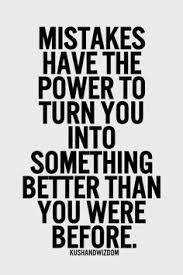
So what do we do with this dead horse we seem to keep attempting to saddle up? The first thing we need to do is indeed embrace the change that is before us. In her Ted Talks video Teacher’s Create What they Experience, Katie Martin puts it best. She states that the lack of change is a “symptom of a system that has continued to add on new resources and expectations to a very old and outdated paradigm of school”(2016). This picture further illustrates this sentiment that VanderArk and Schneider call “layering technology on top of a broken system” (2012):
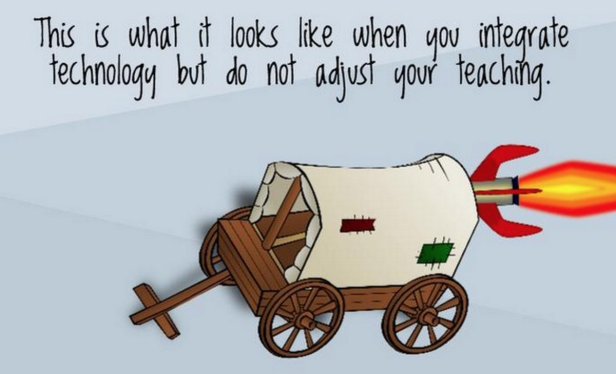
In an effort to get off of my own version of a dead horse, or attempt to rocket launch my antiquated covered wagon, I need to embrace technology with the understanding that it doesn’t have to be scary or complicated. I need to, as shared in this weeks IMMOOC, work to change just one thing I do and build off of that. Take one lesson plan and do less planning. In my overzealous attempt to do my best, I am instead robbing my students of the deep learning that comes with them finding the perfect resource that I just simply copy and hand them. By taking things off of my plate as a teacher, I am handing them the gift of empowerment as a learner (Martin, 2016). Many opportunities exist to accelerate learning through the use of technology. Not only does it help provide a more personalized learning experience, but also a chance to engage in higher order thinking that is student driven and student centered, and therefore more motivating. So, despite some fears and insecurities, I am excited for the amazing changes that await me on the road ahead. It is time to bury the dead horse once and for all and try something new.
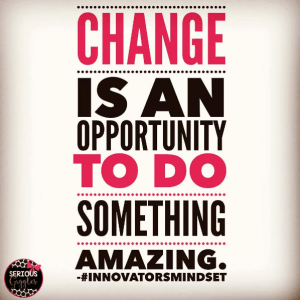


Amy,
Thank you for sharing your thoughts about “the old dead horse” and what the new horse should be. I will have to read the book, because your story reminded me about an old horse named Apache, that I used to ride when visiting my uncles farm in Idaho.
I also share your sentiments about the Common Core, SBA, EES, Springboard and HCPS. While we certainly don’t want to throw out the baby with bath water, there are aspects of it that stifle creativity. I too, have shared the “I choose C” video clip with other educators.
I am also appreciative of the comments that you made about technology not having to be scary or complicated. Lastly, I think it is a great idea to change one thing that we do and work towards riding a new horse, so that we can raise human potential.
LikeLike
Hi Amy,
Love the “saddling up” analogy, and I agree that itʻs time to get on a different horse and ride into a more promising sunset. I can so feel your frustration of having one hand tied to “what youʻre supposed to do” while the other reaches out to children, and how unfortunate that one faulty framework was replaced with another. It seems to me that the “answer” travels to the tippy-top of administration, and we are often only as good as our mandates…and rebels : ). My gosh, what if end-of-year assessments measured student engagement, relationships with adults and peers on campus, buy-in to school culture, etc.? As you outline, itʻs rather impossible to move forward when your horse is laying on its side on the ground!
Aloha,
Rianne
LikeLike
Aloha Amy, your words were spot on. I wholeheartedly agree with you that classrooms need to make the shift to student centered learning. I appreciate that you included the bit regarding making mistakes. I recently showed my student a short clip from Jo Boaler regarding how mistakes are powerful! Research shows that there is more activity in your brain when you make a mistake than when you get an answer correct right away. The struggle is a good thing! My students seemed really encouraged after receiving this information and were more driven than ever before to complete the lesson that followed the video presentation. Students need to know that we believe in them but they also need to believe in themselves.
Your wagon-rocket picture is hilarious and communicates your point perfectly. I love how decorated your webpage and it is motivating me to vamp mine up a bit! Thank you for sharing your personal experience with your daughter. I too, am a rule follower and stepping away from compliance is a struggle for me, particularly when it comes to pressure of standardized testing. I agree that although the intentions of common core were in the right place, it has just replaced one problem with a new one. However, the articles and videos are inspiring me to step outside the box and don’t be afraid to make mistakes in the name of deep learning! Mahalo!
LikeLike
Thanks for such a thoughtful piece, Amy. I applaud your commitment to making schools what they need to be — for our students’ sakes. I agree that making the shift in our own roles as teachers, taking ownership for the learning that happens (or not) in our classrooms, is a first step towards liberating our own and our students’ learning. It takes some guts, but the kids deserve it!
LikeLike
I love the “If you’re riding a horse and it dies, get off” video. What a great, and simple analogy. Too often we try to out think ourselves and add more and more band aid solutions. It is time to think different. I love that it is the kid the realizes the solution and frankly I believe that the pathway to our solution will be through the kids as well. Its time for the DOE to set up cross sectional committees of studetns who are empowered and who’s voices are heard. One of the points that rang so clear with me this weekend was the ridiculousness of giving kids ipads but locking them out of youtube.
LikeLike